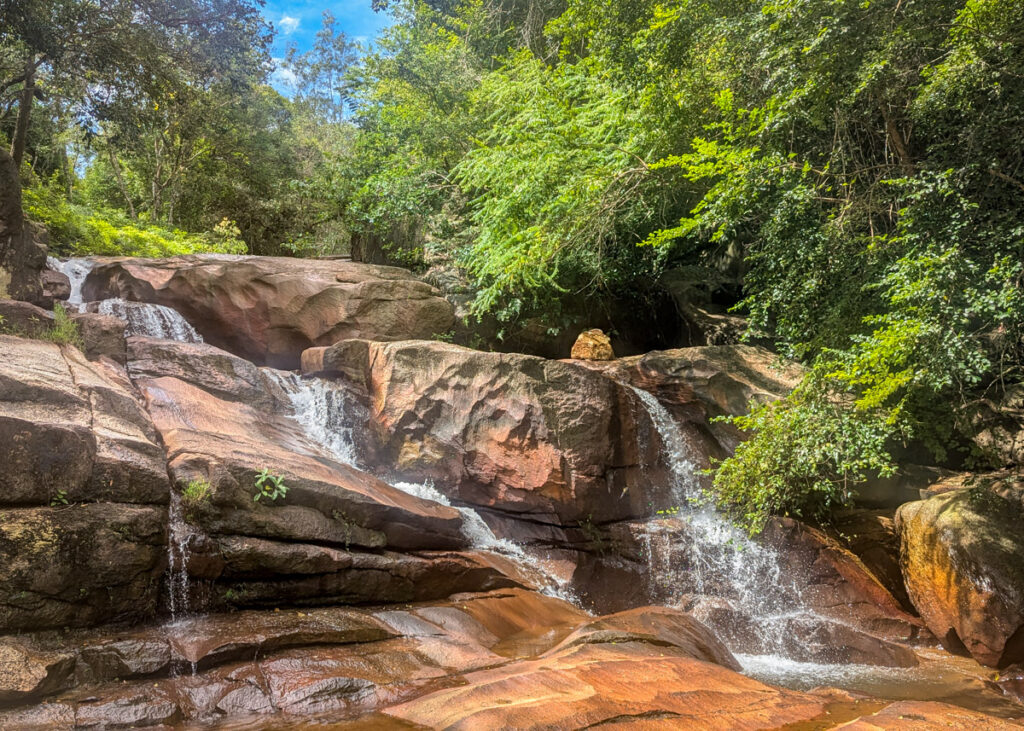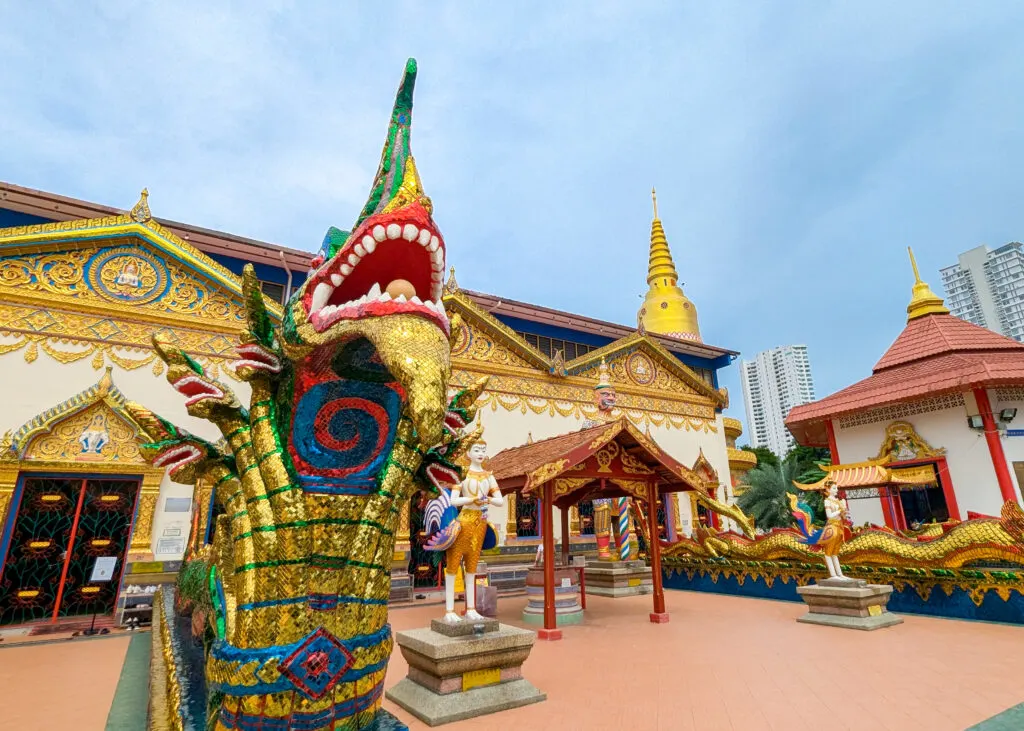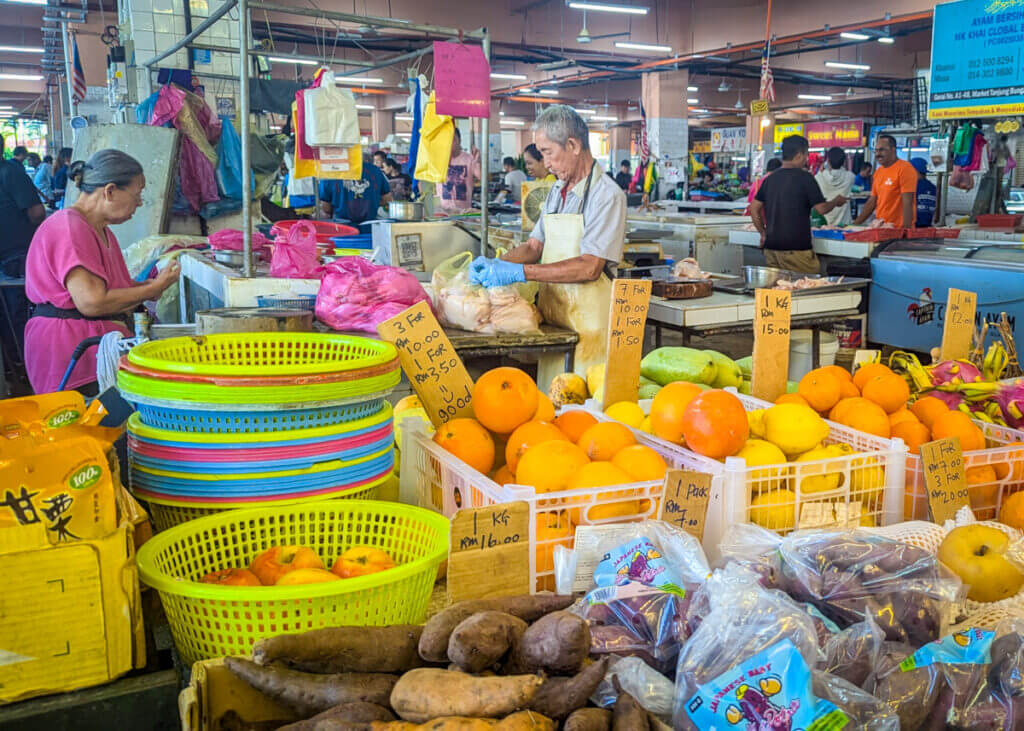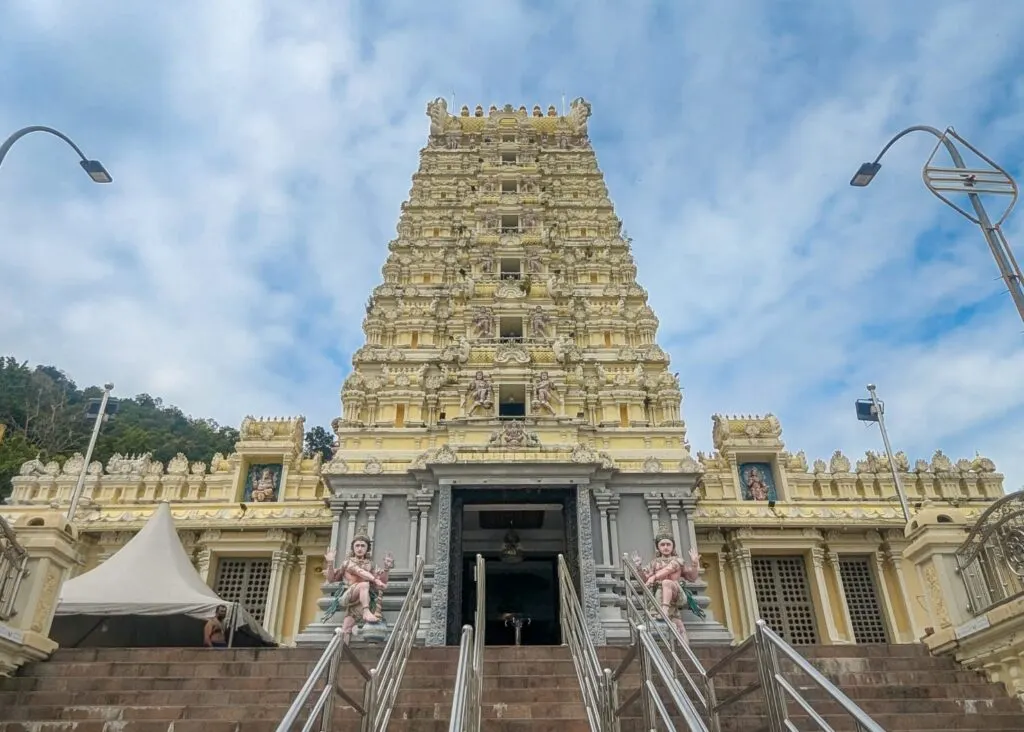Step away from the tourist throngs and discover the true essence of Penang with these hidden gems off the beaten track.
Penang is a vibrant tapestry of culture, history, and natural beauty, brimming with so many things to do. While the UNESCO-listed George Town, celebrated for its iconic street food and captivating street art, or the majestic Penang Hill dominating the skyline often take centre stage, this Malaysian island has so much more to offer. Beyond the well-trodden tourist attractions lies a quieter, hidden side of Penang; one enriched with tranquil villages, untamed nature, and deep-rooted traditions just waiting to be discovered.
If you’re a traveller who enjoys getting off the beaten track rather than ticking off the must-see sights of Penang, then this guide is for you. From hidden jungle trails and secluded beaches to lesser-known temples, we’ll help you discover the island’s best-kept secrets. Step away from the bustling tourist spots and immerse yourself in the authentic, untamed charm of Penang Island.
A map of these off-the-beaten-track gems in Penang
1. Batu Ferringhi Iron Waterfall
READ OUR GUIDE: Batu Ferringhi Iron Waterfall
Only a fifteen minute walk (630 metres) from the main road, the Batu Ferringhi Iron Waterfall might seem close but it feels a world away from the tourism of the resorts and beaches. Just follow the track straight ahead into the rainforest from this point, next to Kafe Vsassy.


The track is relatively flat and easy-going with only the very last section (40 metres) along a muddy path and a few upward steps. Do be mindful of territorial dogs along here when you walk over the bridge, they can seem rather aggressive. Just keep walking and they won’t bother you once your further along the path.
It’s not on most people’s radar, so don’t expect to find much here in the way of tourist infrastructure, but if you’re reading this post, that’s probably what you’re looking for.
After the walk, we very much recommend enjoying some roti canai from Kafe Vsassy.
2. Air Itam Dam
READ OUR GUIDE: Air Itam Dam walk
Sitting above Kek Lok Si Temple on Penang Hill is Air Itam Dam. Commissioned in 1962, this dam forms a vital component of Penang’s water supply. It’s very peaceful here with lush rainforest framing the reservoir.


There’s an easy going loop walk of 2.8km around the reservoir, which is paved all the way around. It’s slightly undulating, but relatively easy going. Aside from the section across the dam wall, the walk is sheltered by trees (beware of the monkeys).
This is a really lovely spot for a morning stroll and while very few tourists venture here, you’ll see lots of locals enjoying the walk.
3. Long Sand Beach (Pantai Pasir Panjang)
READ OUR GUIDE: Visiting Pantai Pasir Panjang (Long Sand Beach)
On the far southwestern tip of the island, Long Sand Beach is easily on of the most stunning beaches in Penang and feels a million miles away from the tourist stretch of Batu Ferringhi beach. However, we were in two minds whether to include it in this guide.
Why? Well, the rubbish (mostly washed up plastic bottles) that lines the back of the beach rather reduces its idyllic status. The beaches to the north of the island are frequented by tourists and are much cleaner. However, few tourists venture to this side of the island and there is no incentive to clean the beach. It’s a stark reminder of the devastation that is taking place in our oceans across the world.


Don’t let this put you off though as a visit to Long Sand Beach really feels like you’re stepping off the beaten track in Penang and with your back to the rubbish, it’s absolutely stunning. Though be prepared for an adventure getting back from this Penang beach.
Getting to Long Sand Beach is pretty straight forward using Grab as a taxi will drop you right at the beach entrance. However, your phone is unlikely to have internet reception to book a return Grab.
Instead, you need to walk the 40 minutes along the road back to the nearest village (Kampung Pulau Betong). There will be reception to book a Grab here, except it’s highly unlikely that the app will let you book one as you’re too far out of the way.
The bus is your best bet. There is a service every 1.5 to 2 hours to take you to Balik Pulau, from where you can either jump on another bus to George Town or have better luck booking a Grab. Check the MyRapid PULSE for times. Our Penang bus guide is a useful read too. If you need to kill some time waiting for the bus there are a couple of small restaurants serving local dishes.
4. Yeoh Jetty
READ OUR GUIDE: Clan Jetties of Penang
Dating back to the nineteenth century and the time when Chinese immigrants began arriving to Penang, the Clan Jetties are a direct link back to the island’s formative years. Having withstood external pressures from demolition and redevelopment, the jetties are now a tourist attraction but more importantly a place where the descendants of those early immigrants are continuing to live and work in the heart of George Town.
While Chew Jetty and Tan Jetty features on most George Town tours, very few tourists venture to Yeoh Jetty on the far end.


Of all the clan jetties, Yeoh Jetty feels the most untouched, with just a simple sign guiding you along the wooden boards towards the sea. The narrow passageway leads past quaint homes with the occasional resident inside going about their daily routine. Don’t expect any tourist infrastructure here at all, and the section of jetty closest to the sea closes at 8.00pm.
Parts of the jetty now sits on reclaimed land, so it’s only towards the end of the walkway that you’ll hear water lapping up against the wooden stilts as the view opens up towards Butterworth and rest of the mainland.
Sitting adjacent to the end of the jetty, it’s impossible to miss Hean Boo Thean Kuan Yin Temple, also known as the Floating Temple. It beautiful and striking in the daytime but, if you’re visiting at night, it moves up another level, with lanterns and luminous bulbs blazing across the water.
5. Chaiya Mangalaram Thai Buddhist Temple and Dhammikarama Burmese Temple
Only a few minutes drive away from central George Town (located here), you can find two stunning temple complexes hidden amongst the skyrise buildings behind Gurney Drive. Located across the road from each other (on land originally donated by Queen Victoria), the Thai and Burmese temples are slightly off the usual Penang tourist trail, although they can both still be quite busy at the weekends or (particularly) around religious festivals.
Both temples are within walking range of the malls on Gurney Drive, otherwise a Grab taxi can drop you directly outside them both. Opening hours are from 8.00am to 6.00pm with free entry, although donations are welcomed. You should expect to spend around one hour at both temples.


If you’ve visited Thailand, then Wat Chayamangkalaram will transport you straight back there, it’s certainly a slice of Thailand dropped into the middle of Penang. There are several temples to visit and observe, although the highlight is no doubt the elegant reclining 33m long Buddha.
When you’ve finished with Thailand, it’s time to cross the road and enter Myanmar/Burma and visit the Burmese temple, which is the larger of the two and will need a little more of your time. Stroll through the covered walkway to view the paintings and ornate statues, then continue past the water features and other temples. The level of detail and attention which has gone into the gold leaf designs is mesmerising, and rewards a leisurely wander around. The striking stupa that’s visible from the main road is actually less impressive inside than you might expect, but it’s still a treat to get up close to this landmark.
6. Tanjung Bungah Market & Food Complex
Tucked away in the vibrant neighbourhood of Tanjung Bungah, the Tanjung Bungah Market & Food Complex (located here) is a must-visit for those who want to experience the local way of life on Penang Island. It’s all undercover, so a good place to visit to escape a tropical downpour or the heat, and is open 7am to 12pm every day.
It’s a very manageable size and not at all a place you may feel lost in, but still has that typical bustling market feel you expect of local markets across Asia with fresh produce, seafood, meats and local delicacies to purchase. Bring cash, although you can pay via Grab Pay and Touch ‘n Go e-wallet (which you may have if you are living in or travelling Malaysia long term).


While the produce might not be significantly cheaper than what you find in supermarkets, the experience of navigating the market offers a unique glimpse into the daily life of Penang locals.
After picking up some fresh mangoes and papaya, head to the adjacent food stalls serving up Penang’s iconic street food. There are three sections to the food stalls, so make sure you take a walk around them all before you decide on whether to have a char kway teow, a bowl of aromatic laksa, or just some simple roti canai with a curry dip.
7. Penang Waterfall Hill Temple
READ OUR GUIDE: Penang Waterfall Hill Temple
Just next to Penang Youth Park, perched on a hill, is Penang Waterfall Hill Temple, also known as Arulmigu Balathandayuthapani Temple. Very few tourists visit this temple as it’s not as accessible as those around George Town and is not as impressive at the Chinese Buddhist temple of Kek Lok Si Temple, but it’s a fascinating insight into the Hindu traditions of the island and the hilltop temple, with its seven-storey 21.6m-tall gopuram (main tower), has been touted as the largest Lord Murugan temple outside India.
The journey to the temple is an adventure in itself, involving a climb of 513 steps, which makes the temple higher than the one in Batu Caves in Kuala Lumpur. Although this may sound like a daunting feat for your feet, it’s actually not too much of an arduous climb as the steps aren’t steep and there are a couple of flat sections to take a break. Plus the view at the top and the beautiful temple make the effort worthwhile.


To be respectful, remove your shoes to climb the steps barefoot and leave your shoes at the designated shoe rack. You should also wear long trousers/skirts and shoulders should be covered. While this is not strictly enforced and you will see tourists walking up wearing trainers and shorts, it is a sign of respect to do as the locals do.
Once you’re at the top you can explore the temple and witness priests blessing the worshippers. There’s a separate set of steps leading downwards, which then meets the original steps.
After your visit, we recommended taking a short walk to Dim Sum Cha Yun for a bite to eat.
Entry to Penang Waterfall Hill Temple is free. It opens at 6.00am and closes at 12.00pm, then re-opens at 4.30pm until 9.00pm (give or take a few minutes).
Before your go, check out these useful reads for your visit:
The best things to do in Penang
15 BEST restaurants in Penang
Top tips for visiting Penang
One day Penang itinerary
Best hotels in Penang
How to get around Penang
A brief history of Penang


